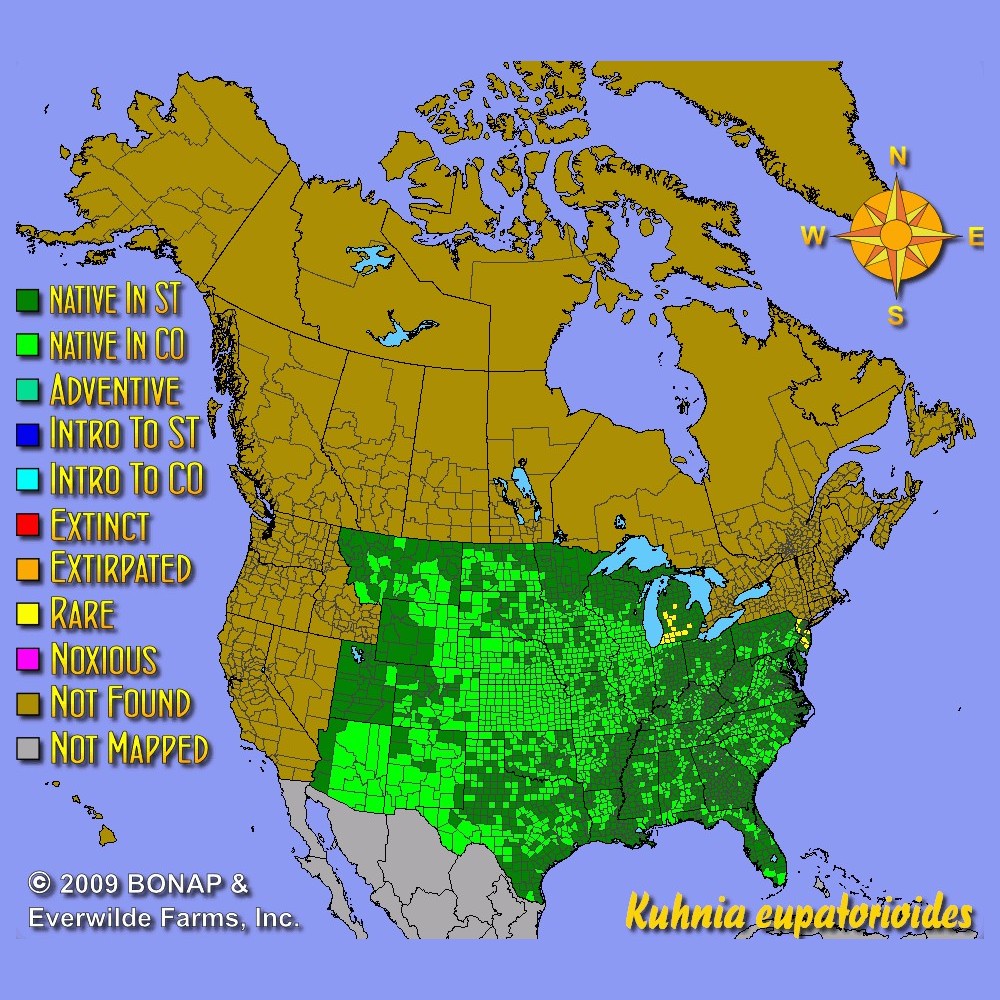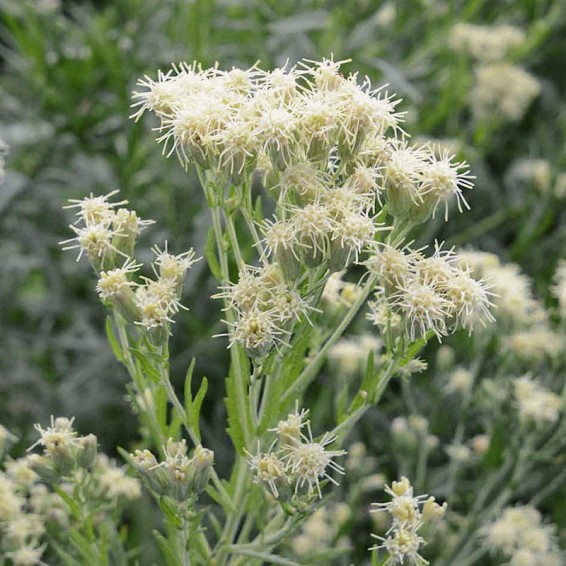False Boneset Seeds
Kuhnia eupatorioides
- HOW TO GROW
- FAST FACTS
HOW TO GROW
Sowing: Direct sow in late fall or early spring, pressing the seeds into the surface and covering them with a thin layer of soil.
Growing: Seedlings will need occasional watering until they become established. Remove weeds to allow the young plants to develop. Mature plants tolerate drought well, and can flourish in poor or rocky soil. This plant does not spread; because of their large taproots, plants should not be divided. These flowers attract bees and butterflies.
Harvesting: These blossoms do not perform well as cut flowers, and are best enjoyed outdoors.
Seed Saving: After flowering, the plant will produce seed heads containing small clusters of seed with white fluff. Since sparrows and goldfinches love to eat the seed, harvest it promptly to avoid loss. Cut the mature seed heads, or shake them into a container to remove the seed material. Clean the seed as well as possible, then store it in a cool, dry place.
FAST FACTS
Latin Name: Kuhnia eupatorioides
Species Origin: US Native Wildflower
Type: Native Wildflowers
Life Cycle: Perennial
USDA Zones: 3, 4, 5, 6, 7, 8, 9, 10, 11
US Regions: Mountain, Arid/Desert, Plains/Texas, Midwest, Northeast, Southeast
Seeds per Ounce: 30,800
Stratification: No Stratification
Germination Ease: No Stratification
Sunlight: Full Sun, Part Sun
Height: 36 Inches
Color: Cream
Bloom Season: Blooms Late Summer, Blooms Early Fall
DESCRIPTION

HOW TO GROW
Sowing: Direct sow in late fall or early spring, pressing the seeds into the surface and covering them with a thin layer of soil.
Growing: Seedlings will need occasional watering until they become established. Remove weeds to allow the young plants to develop. Mature plants tolerate drought well, and can flourish in poor or rocky soil. This plant does not spread; because of their large taproots, plants should not be divided. These flowers attract bees and butterflies.
Harvesting: These blossoms do not perform well as cut flowers, and are best enjoyed outdoors.
Seed Saving: After flowering, the plant will produce seed heads containing small clusters of seed with white fluff. Since sparrows and goldfinches love to eat the seed, harvest it promptly to avoid loss. Cut the mature seed heads, or shake them into a container to remove the seed material. Clean the seed as well as possible, then store it in a cool, dry place.
FAST FACTS
Latin Name: Kuhnia eupatorioides
Species Origin: US Native Wildflower
Type: Native Wildflowers
Life Cycle: Perennial
USDA Zones: 3, 4, 5, 6, 7, 8, 9, 10, 11
US Regions: Mountain, Arid/Desert, Plains/Texas, Midwest, Northeast, Southeast
Seeds per Ounce: 30,800
Stratification: No Stratification
Germination Ease: No Stratification
Sunlight: Full Sun, Part Sun
Height: 36 Inches
Color: Cream
Bloom Season: Blooms Late Summer, Blooms Early Fall



